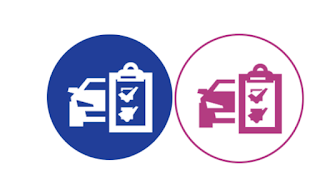Every vehicle owner in Australia must ensure that the vehicle is roadworthy and that it complies with local regulations. For this, testing related to blue slips in Castle Hill becomes very critical. A blue slip is a certificate issued by the federal government that reveals that your vehicle is roadworthy and complies with local regulations. Let us understand the details of the blue slip in Castle Hill and the inclusions of the inspection process.
WHAT IS A BLUE SLIP?
A blue slip in Castle Hill is officially given the name of Authorised Unregistered Vehicle Inspection, and it is a comprehensive vehicle safety check recommended for vehicles that have remained unregistered for over 3 months. This inspection is carried out to ensure that the vehicle complies with necessary safety standards and is safe to run on the roads. Here are some everyday situations where services related to blue slip in Castle Hill might be required.
RE-REGISTERING OR REGISTERING AN UNREGISTERED VEHICLE
If the vehicle has been off the road for over 3 months, you must obtain a blue slip in Castle Hill to drive it again.
TRANSFERRING OR INTERSTATE REGISTRATION
Transferring your vehicle from one state to another requires a blue slip in Castle Hill. Similarly, when importing your vehicle from overseas, a blue slip in Castle Hill will be required. This certificate will ensure that the vehicle meets the necessary Australian Safety Standards.
HOW TO PREPARE FOR BLUE SLIP INSPECTION?
According to expert bar fitters and battery chargers, you must prepare your vehicle for inspection of the blue slip in Castle Hill. Some common steps are listed below, beginning with gathering the necessary documents.
Gather necessary documents
These typically include:
- Proof of identity (e.g., driver's license)
- Proof of vehicle ownership
- Previous registration papers (if applicable)
- Import documentation (for imported vehicles)
PRE-INSPECTION CHECK
Before taking your vehicle for inspection for a blue slip in Castle Hill, you must check identify and fix some common issues. They will ensure that no delays are caused and no additional cost is involved.
KEY AREAS TO INSPECT
LIGHTS AND INDICATORS
- Ensure all lights, including headlights, brake lights, and indicators, are functioning correctly.
BRAKES
- Check the brake pads, discs, and fluid levels.
TYRES
- Inspect the tyre tread and pressure.
WINDSCREEN AND WIPERS
- Ensure the windscreen is free of cracks and the wipers are effective.
FLUID LEVELS
- Check engine oil, coolant, and other essential fluids.
The primary focus of blue slip inspection is to ensure the vehicle is safe and roadworthy. This includes checking:
- Brake's functionality and effectiveness
- Steering and suspension condition and performance
- Lights and reflectors' proper operation and visibility
- Tyres condition and compliance with legal standards
- Seatbelts presence and functionality
- Structural integrity and absence of significant rust on body and chassis

No comments:
Post a Comment